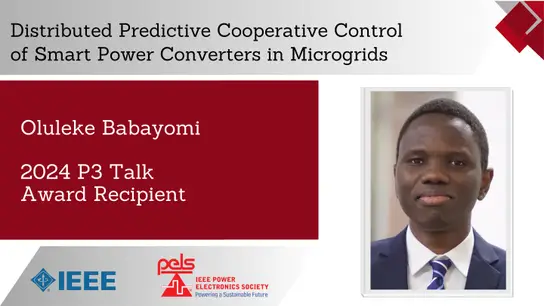-
Members: FreeSSCS
IEEE Members: $11.00
Non-members: $15.00Pages/Slides: 60
30 Nov 2021
Abstract: The first crystal oscillator was designed approximately 100 years ago, and today there are few electronic devices without at least one crystal oscillator to generate an accurate clock reference. Despite being ubiquitous, crystal oscillators have drawbacks, including cost, large size, degraded frequency stability at temperature extremes, and sensitivity to shock and vibration. In the quest for further reducing the footprint of electronic systems to enable new applications, it is desirable have a high stability resonator that can be integrated into an SoC, while ideally also reducing some of the drawbacks of crystals. Bulk acoustic wave resonators (BAW) are one type of device that has been suggested for this application, with the first BAW oscillator built 40 years ago. The first prototypes suffered from inaccurate frequency and relatively large size. Since then, many advances have been made, and BAW oscillators are now a commercial reality. This presentation will cover the physics of BAW resonators, including frequency selection and passive temperature compensation, and circuits design considerations, such as oscillator topologies, frequency tunability, jitter reduction, and active temperature compensation. Finally, system level advantages will be presented, including improved security and resistance to tampering.
Bio: Danielle Griffith received the B.S.E.E. and M.Eng. degrees from the Massachusetts Institute of Technology, Cambridge in 1996 and 1997, respectively. She joined Motorola in Tempe, AZ in 1997 and worked in the area of RF circuit design. In 2003, she joined Texas Instruments in Dallas, Texas and is a Fellow in the Connectivity business unit developing circuits and techniques for reducing cost, power consumption, and circuit board area for low power wireless connectivity products. Her current focus areas are architectures for efficient wireless systems, low power oscillators and MEMS circuitry. She is also actively involved in initiatives within Texas Instruments to increase diversity in senior technical roles. She has published >50 papers, most of them in IEEE journals or conferences. She has written a book chapter titled “Synchronization Clocks for Ultra-Low Power Wireless Networks” which was published by Springer as a part of the book “Ultra-Low-Power Short-Range Radios”. Danielle holds 19 issued US patents and has given multiple university and IEEE conference tutorial and workshop sessions. She was a member of the Technical Program Committees for the IEEE RFIC Symposium for conferences years 2014 and 2015, the IEEE International Solid-State Circuits Conference for conference years 2015-2019, and the IEEE VLSI Symposium since 2019. She is a senior member of the IEEE, an associate editor of the IEEE Journal of Solid-State Circuits since 2020, and has been selected as Distinguished Lecturer of the IEEE Solid-State Circuits Society for 2021–2022.
Bio: Danielle Griffith received the B.S.E.E. and M.Eng. degrees from the Massachusetts Institute of Technology, Cambridge in 1996 and 1997, respectively. She joined Motorola in Tempe, AZ in 1997 and worked in the area of RF circuit design. In 2003, she joined Texas Instruments in Dallas, Texas and is a Fellow in the Connectivity business unit developing circuits and techniques for reducing cost, power consumption, and circuit board area for low power wireless connectivity products. Her current focus areas are architectures for efficient wireless systems, low power oscillators and MEMS circuitry. She is also actively involved in initiatives within Texas Instruments to increase diversity in senior technical roles. She has published >50 papers, most of them in IEEE journals or conferences. She has written a book chapter titled “Synchronization Clocks for Ultra-Low Power Wireless Networks” which was published by Springer as a part of the book “Ultra-Low-Power Short-Range Radios”. Danielle holds 19 issued US patents and has given multiple university and IEEE conference tutorial and workshop sessions. She was a member of the Technical Program Committees for the IEEE RFIC Symposium for conferences years 2014 and 2015, the IEEE International Solid-State Circuits Conference for conference years 2015-2019, and the IEEE VLSI Symposium since 2019. She is a senior member of the IEEE, an associate editor of the IEEE Journal of Solid-State Circuits since 2020, and has been selected as Distinguished Lecturer of the IEEE Solid-State Circuits Society for 2021–2022.
Primary Committee:
SSCS


